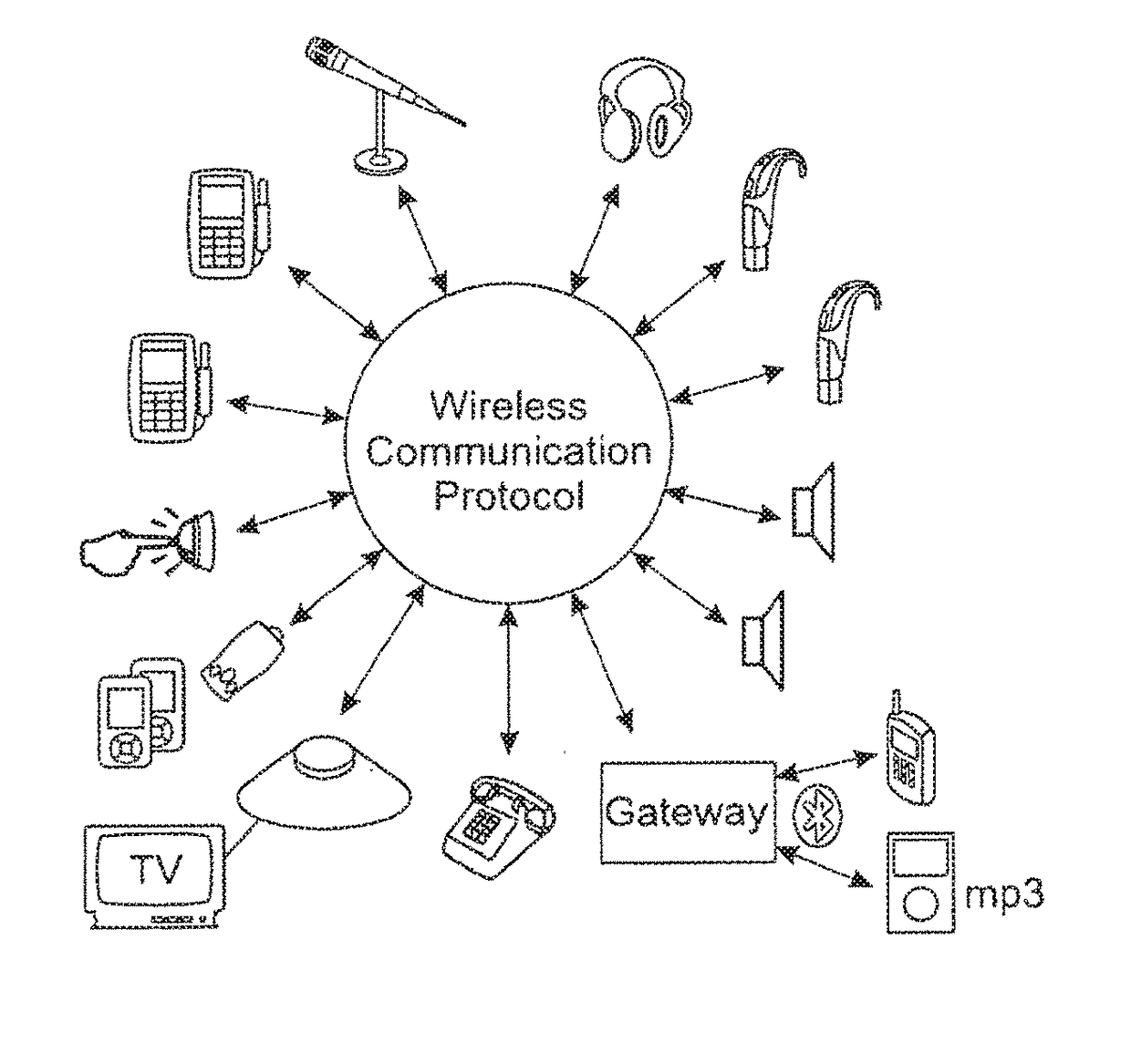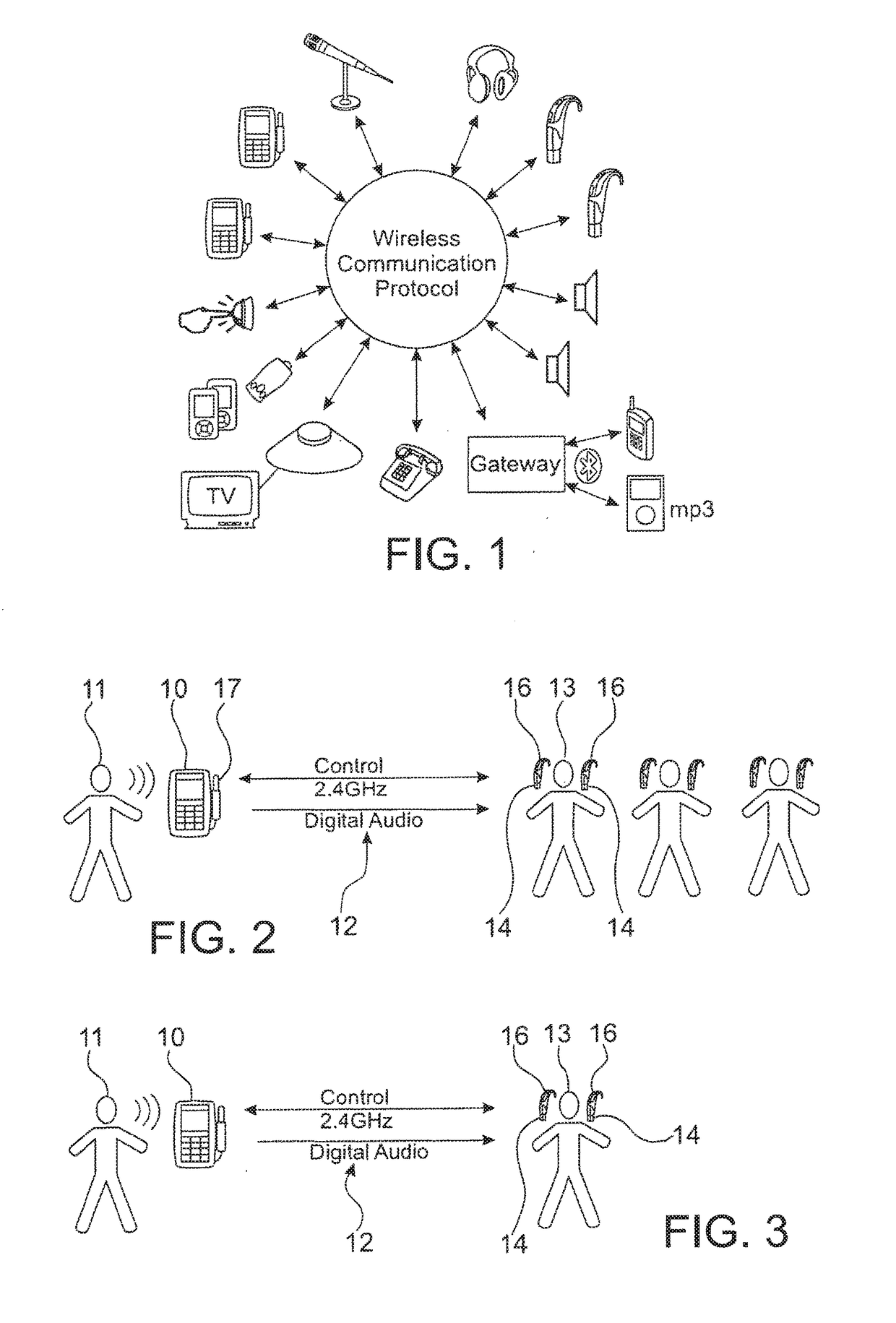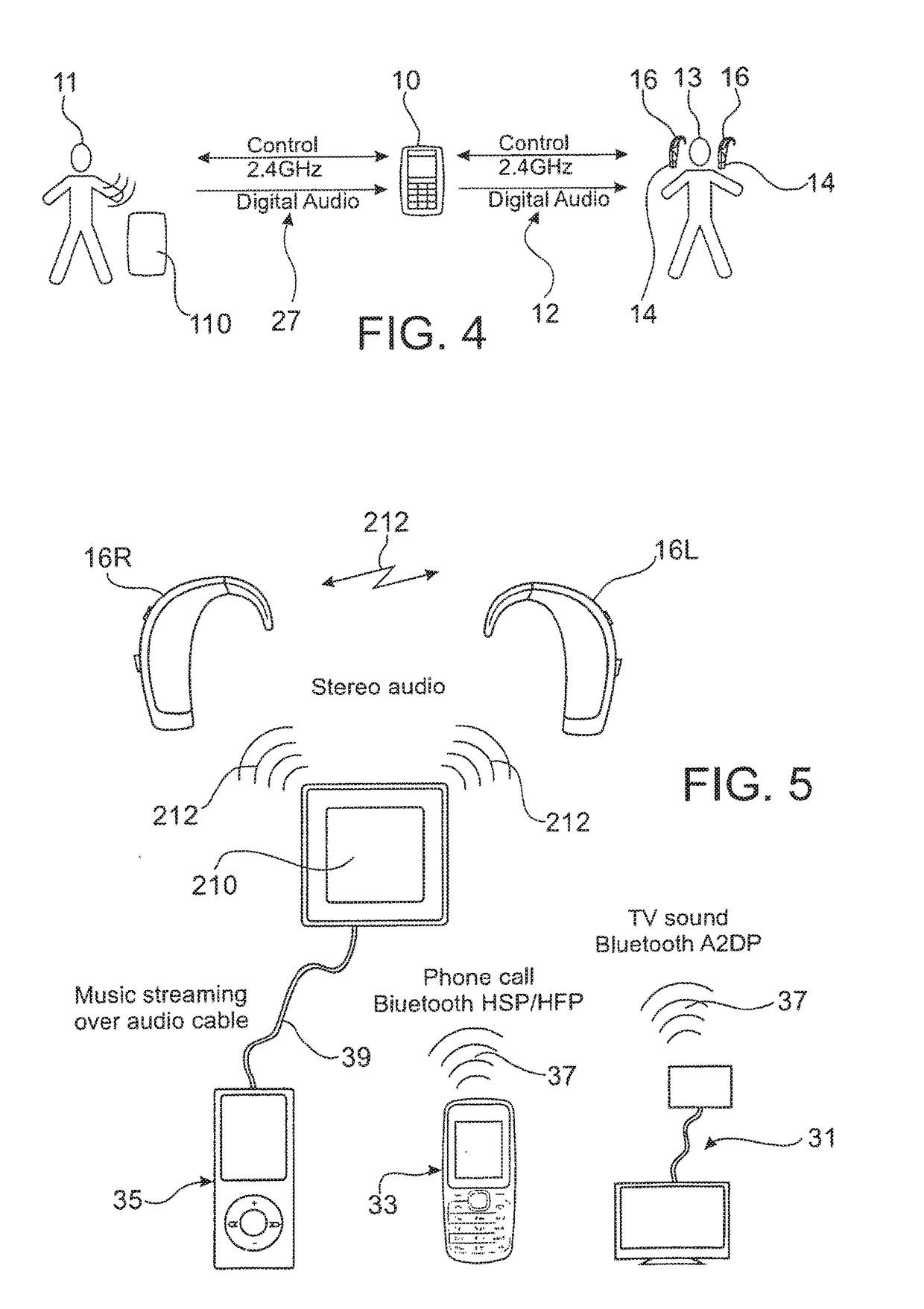Wireless Sound Tranmission System and Method
a technology of sound tranmission and wireless technology, applied in the direction of electrical transducers, loudspeakers, microphones, etc., can solve the problems of limited communication range of wireless networking devices, electrical power consumption, technical constraints, etc., and achieve the effect of simple manner
- Summary
- Abstract
- Description
- Claims
- Application Information
AI Technical Summary
Benefits of technology
Problems solved by technology
Method used
Image
Examples
Embodiment Construction
[0034]The present invention relates to a system for providing hearing assistance to at least one user, wherein audio signals are transmitted, by using a transmission unit comprising a digital transmitter, from an audio signal source via a wireless digital link to at least one receiver unit, from where the audio signals are supplied to means for stimulating the hearing of the user, typically a loudspeaker, but including any other type of stimulation, such as a cochlear implant electrode or an implantable electromechanical actuator coupled to an ossicle or directly to the cochlea.
[0035]The invention is not restricted to a particular kind of the wireless link. For example, the invention may be applied to an inductive link (magnetic near-field coupling between the antennas), as it may be used in hearing instrument body area networks (wherein hearing devices and accessories of hearing devices are worn on the user's body and / or are manually handled as hand-held devices by the user), or an...
PUM
 Login to View More
Login to View More Abstract
Description
Claims
Application Information
 Login to View More
Login to View More - R&D
- Intellectual Property
- Life Sciences
- Materials
- Tech Scout
- Unparalleled Data Quality
- Higher Quality Content
- 60% Fewer Hallucinations
Browse by: Latest US Patents, China's latest patents, Technical Efficacy Thesaurus, Application Domain, Technology Topic, Popular Technical Reports.
© 2025 PatSnap. All rights reserved.Legal|Privacy policy|Modern Slavery Act Transparency Statement|Sitemap|About US| Contact US: help@patsnap.com



